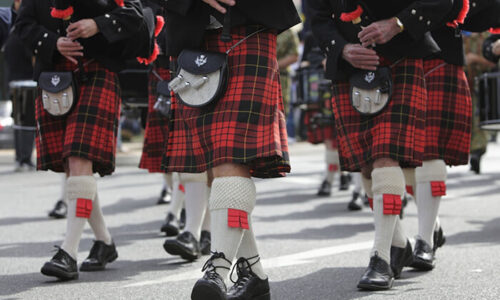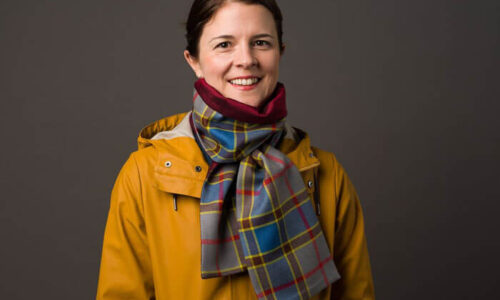Highland cattle have captured the hearts of farmers and animal enthusiasts worldwide with their majestic long horns, shaggy coats, and gentle temperament. These iconic Scottish bovines, often called “fluffy cows” due to their distinctive appearance, are increasingly popular among homesteaders, hobby farmers, and those seeking unique pets. If you’re considering adding these magnificent animals to your property, understanding the financial commitment is essential. This comprehensive guide explores Highland cattle pricing, miniature varieties, ownership costs, and everything you need to know before making this significant investment.
Understanding Highland Cow Pricing: What to Expect
The price of Highland cattle varies significantly based on multiple factors, including size, age, gender, breeding quality, and location. Standard full-size Highland cows typically range from $1,500 to $5,000, while exceptional registered breeding stock can command prices exceeding $10,000. Mini Highland cows have become particularly popular in recent years, with prices generally starting around $2,000 and reaching $8,000 or more for premium animals with excellent genetics and conformation.
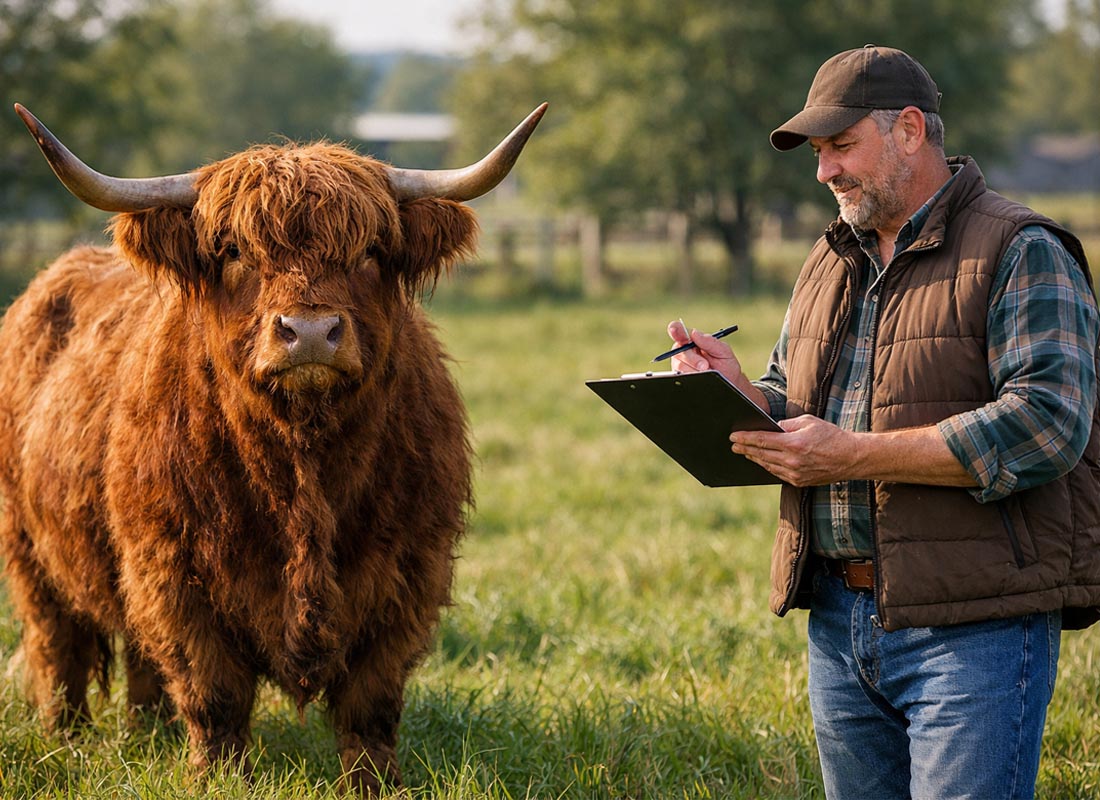
Baby Highland calves represent the most affordable entry point into Highland cattle ownership. Young calves typically start around $800 to $2,000, depending on their parentage and whether they’re registered. These adorable youngsters require more hands-on care initially, but allow owners to bond with their animals from an early age. As calves mature, their value increases, especially if they develop into quality breeding animals with desirable characteristics.
When evaluating what Highland cattle cost in your area, it’s important to compare offerings from multiple breeders and understand what influences pricing. Registration papers from organizations like the American Highland Cattle Association add significant value, as do genetic testing results and documented lineage. Cows with proven fertility records and strong maternal instincts typically command higher prices in the marketplace, as do bulls with desirable traits for improving herd genetics.
Mini Highland Cows: Pricing and Popularity
Miniature Highland cattle have surged in popularity as more people discover these scaled-down versions of the traditional breed. Mini Highland cow prices typically range from $2,000 to $6,000, with micro mini Highland cows at the smallest end of the spectrum commanding even higher prices due to their rarity. These compact cattle possess all the charm and hardiness of their full-sized relatives but require less space and feed, making them ideal for smaller properties.
The growing demand for mini fluffy cows has created a robust market for quality breeding stock. Breeders who specialize in miniature Highland cattle often have waiting lists for their calves, particularly for animals with excellent conformation and desirable coat colors. The miniaturization process requires careful breeding over multiple generations, which contributes to the premium pricing for true miniature Highland cattle compared to standard-sized animals.
When searching for miniature Highland cattle for sale, buyers should verify the actual size of the animals and their parents. The term “miniature” can be used loosely in livestock sales, so understanding the expected mature height and weight is crucial. True miniature Highland cows typically stand 36 to 42 inches at the shoulder, while micro minis may be even smaller. Always ask breeders for specific measurements and growth projections based on the calf’s parentage.
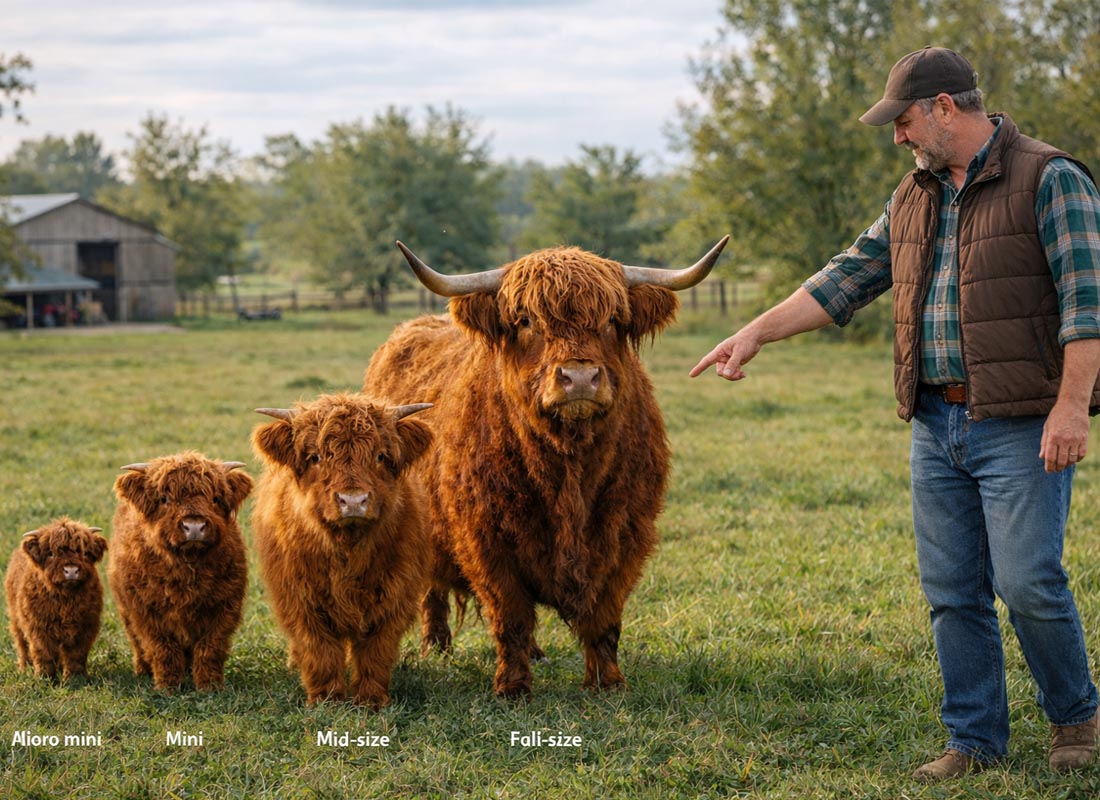
Size Categories and Price Ranges:
- Micro Mini (under 36 inches): $4,000 – $10,000+
- Mini Highland (36-42 inches): $2,500 – $7,000
- Mid-Size Highland (42-48 inches): $2,000 – $5,000
- Full-Size Highland (48+ inches): $1,500 – $5,000+
Scottish Highland Cattle: Heritage and Value
Traditional Scottish Highland cattle represent centuries of careful breeding in harsh Highland environments, developing remarkable characteristics that justify their cost. These animals evolved to withstand extreme weather conditions, efficiently convert rough forage into quality beef, and thrive with minimal intervention. The Scottish Highland cow cost reflects not just the animal itself but the genetic heritage and proven adaptability that make this breed so valuable.
Registered Highland cattle with documented Scottish lineage often command premium prices in the marketplace. Many serious breeders maintain detailed pedigrees tracing back to foundation herds in Scotland, and this documented heritage adds significant value. Bulls with proven Scottish bloodlines are particularly sought after for breeding programs aimed at maintaining or improving traditional breed characteristics like coat quality, horn development, and overall conformation.
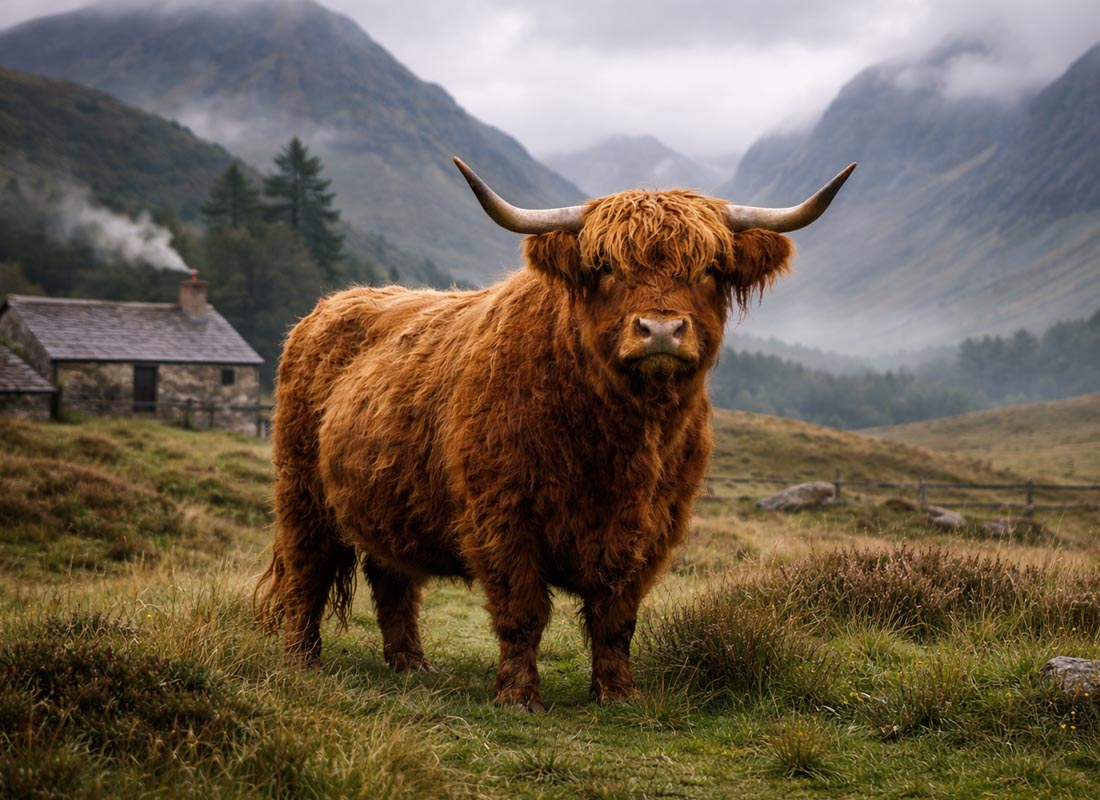
The distinctive appearance of Highland cattle contributes substantially to their market value. Their double coat, consisting of a downy undercoat and long, protective outer coat, creates the “fluffy cow” appearance that has made them social media sensations. This visual appeal extends beyond agricultural circles, with Highland cattle becoming popular attractions at petting farms, agritourism operations, and even as unusual pets for those with adequate land and resources.
Highland Cow Pet Price: Considerations for Non-Farm Owners
The concept of keeping a Highland cow as a pet has gained traction in recent years, though it requires serious consideration and preparation. Highland cattle kept primarily as pets rather than for breeding or beef production typically cost similar amounts to those purchased for agricultural purposes, ranging from $1,500 to $5,000, depending on size and age. However, the ongoing costs of maintaining a pet Highland cow can exceed those of traditional livestock operations since pet owners often provide higher levels of individual care and enrichment.
Mini Highland cows have become particularly popular as pets due to their manageable size and gentle temperament. These smaller animals fit better on suburban or semi-rural properties where space is limited. Many people drawn to fluffy cows as pets appreciate their dog-like personalities, as Highland cattle are known for being friendly, curious, and forming strong bonds with their caretakers. However, prospective pet owners must understand that even miniature Highland cattle require significant space, proper fencing, and daily care.

Before purchasing a Highland cow as a pet, carefully evaluate your property, local zoning regulations, and long-term commitment. Highland cattle can live 15 to 20 years or more, representing a substantial time investment. They need adequate pasture for grazing, shelter from extreme weather, and access to fresh water at all times. Even the most devoted pet owners must be prepared for the reality that Highland cattle are large animals requiring knowledgeable handling and veterinary care from professionals experienced with livestock.
Factors Affecting Highland Cattle Prices
Multiple elements determine the final price you’ll pay when searching for Highland cattle for sale. Age remains one of the most significant factors, with younger animals generally costing less than mature breeding stock. A weaning calf might cost $1,000 to $2,000, while a three-year-old heifer ready for breeding could range from $2,500 to $4,500. Proven breeding cows with several successful calvings typically command the highest prices among female cattle.
Gender also plays a crucial role in pricing structures across all sizes of Highland cattle. Bulls with proven genetics and desirable characteristics for breeding programs can cost significantly more than females of comparable age and quality. Meanwhile, steers intended for beef production are usually priced lower since they cannot contribute to breeding programs. The substantial difference in bull pricing reflects their ability to influence entire herds through breeding, making quality bulls a valuable investment for serious breeders.
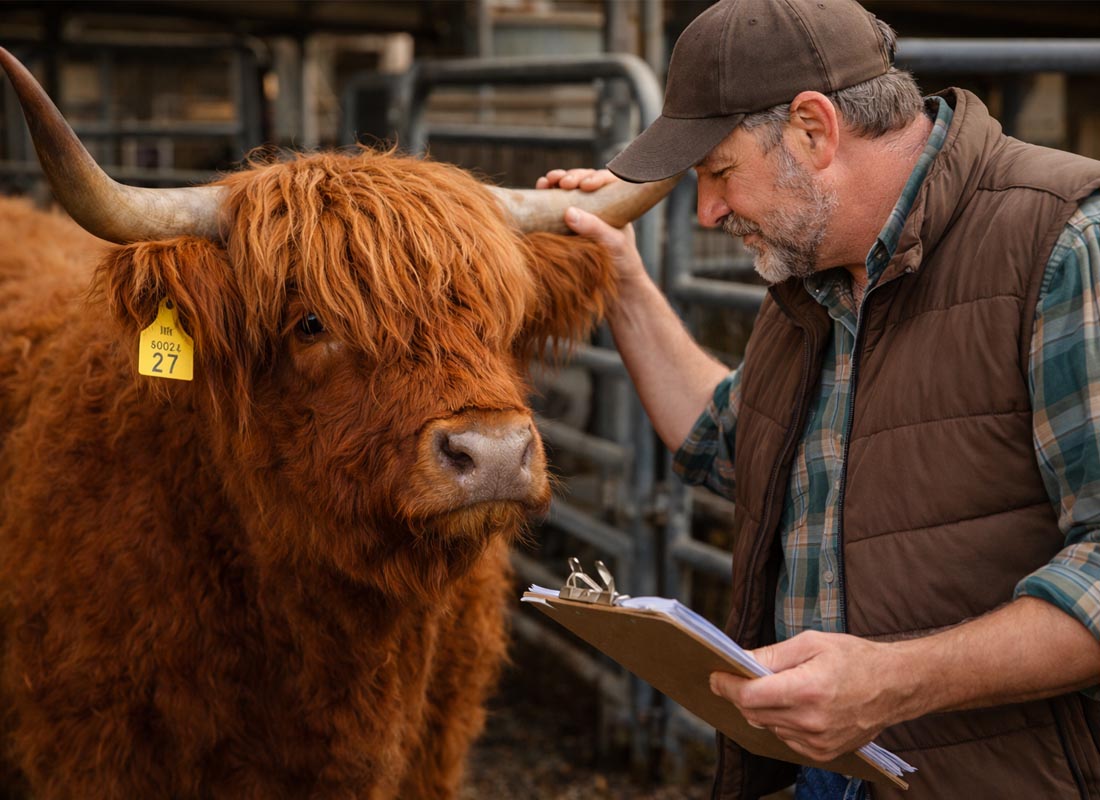
Key Price Factors:
- Registration status and pedigree documentation
- Breeding quality and genetic lineage
- Size classification (micro mini, mini, or full-size)
- Age and reproductive status
- Color variations (rare colors command premium prices)
- Geographic location and local market demand
- Health certifications and vaccination records
- Show ring achievements and awards
Coat color significantly influences Highland cattle prices across all size categories. Traditional red and black remain the most common colors and typically represent the baseline pricing. Rarer colors, including yellow, white, dun, silver, and brindle, often command premiums of 20% to 50% or more above standard colors. Some breeders specialize in specific rare colors, developing reputations for producing exceptionally beautiful animals in these coveted shades.
Where to Find Highland Cattle for Sale
Locating reputable sources for Highland cattle requires research and patience. The American Highland Cattle Association maintains breeder directories categorized by state and specialization, including breeders who focus on miniature varieties. These registered breeders typically offer the highest quality animals with proper documentation, health certifications, and often provide ongoing support to buyers. Working with association members provides additional recourse if issues arise, as members must adhere to ethical breeding and sales practices.
Online marketplaces have expanded options for those searching for Highland cattle for sale, including specialized livestock websites, social media groups, and agricultural classified platforms. These venues offer access to animals nationwide, though buyers must exercise caution and conduct thorough due diligence. Request extensive photos and videos, verify breeder credentials, ask for references from previous buyers, and ideally arrange for pre-purchase veterinary examinations before committing to any sale.
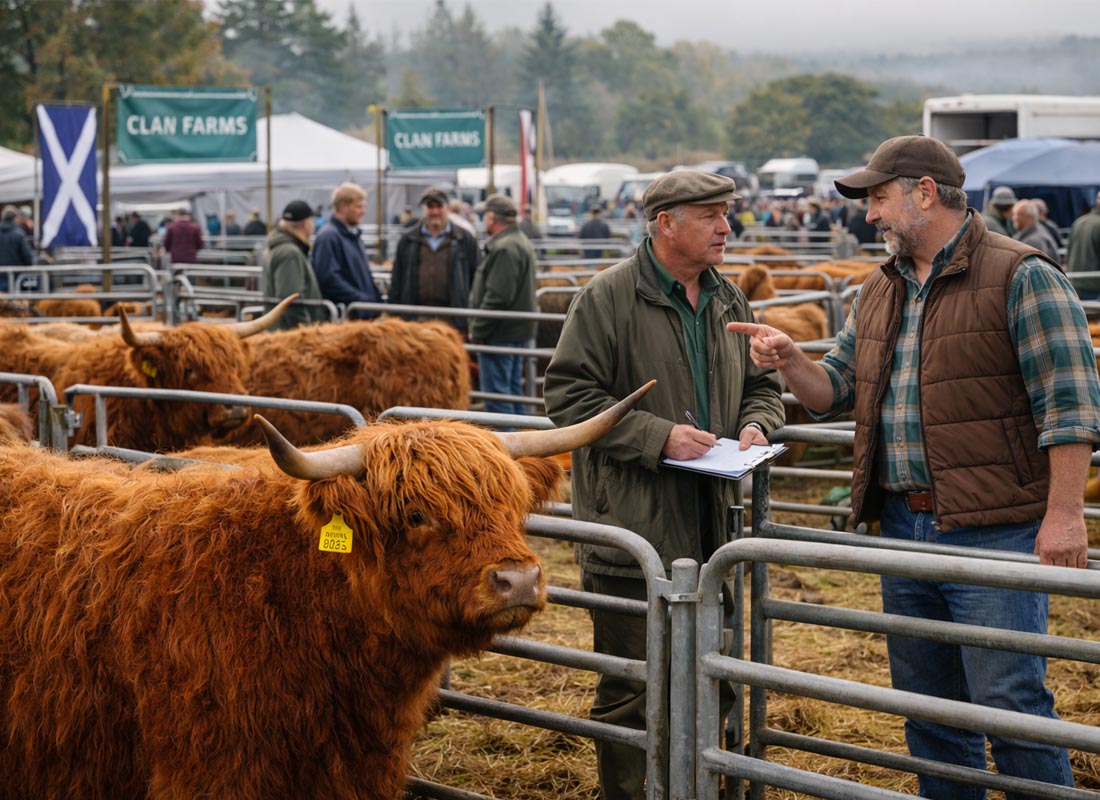
Agricultural shows and livestock exhibitions provide excellent opportunities to see Highland cattle in person and meet breeders face-to-face. These events allow you to compare animals from multiple herds, evaluate temperament and conformation firsthand, and ask detailed questions directly to experienced breeders. Many breeders offer show specials or discounts for animals that have completed their exhibition careers, providing potential savings for buyers willing to purchase mature, proven animals rather than young calves.
Initial Purchase Costs and Setup Requirements
Beyond the purchase price of Highland cattle, prospective owners must budget for transportation and initial setup expenses. Transporting Highland cows can cost anywhere from $200 to $2,500, depending on distance, with some breeders offering delivery services within certain regions. Long-distance transport requires specialized livestock haulers and proper documentation, adding to overall costs. Factor these expenses into your budget when comparing animals from breeders at varying distances from your property.
Property preparation represents a significant initial investment before bringing Highland cattle home. Adequate fencing is essential, with most experts recommending four to five-foot-high fencing for miniature varieties and five to six-foot-high fencing for full-size Highland cattle. Fencing costs vary widely based on property size, terrain, and material choice, but budget at least $1,500 to $6,000 for perimeter fencing adequate for cattle. Highland cattle are generally respectful of fencing, but their horns and strength require sturdy, well-maintained barriers.
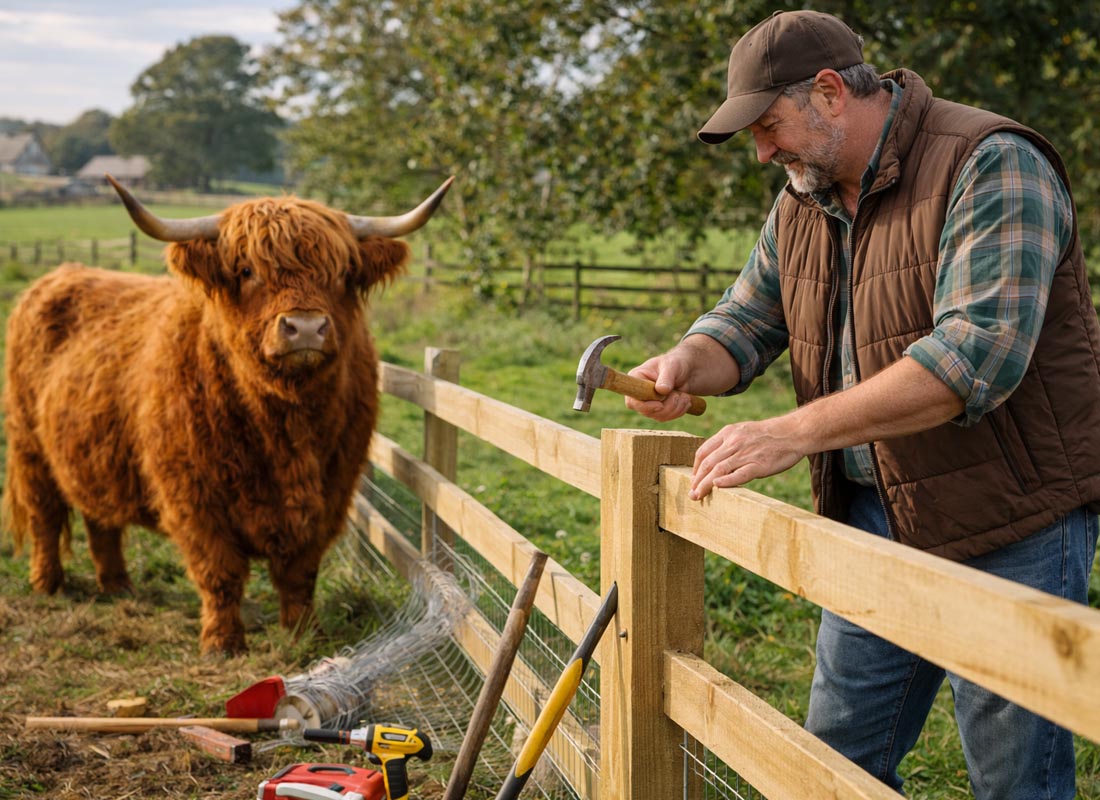
Shelter requirements for Highland cattle are relatively minimal due to their exceptional cold hardiness, though basic protection from extreme weather benefits animal health and comfort. A simple three-sided shelter or run-in shed suffices in most climates, with costs ranging from $500 for basic structures to $5,000 or more for permanent barns. Additional equipment, including water troughs, feeders, and hay storage, also requires initial investment. Budget at least $500 to $2,000 for these essential items, depending on the number of animals and your specific setup.
Annual Maintenance and Operating Costs
Ongoing expenses for Highland cattle extend well beyond the initial purchase price, requiring careful budgeting for sustainable ownership. Feed represents the largest annual expense for most cattle owners, though Highland cattle are exceptionally efficient grazers that can thrive on pasture. Supplemental feed becomes necessary during winter months or when pasture quality declines, with annual feed costs typically ranging from $600 to $2,000 per animal depending on pasture availability, climate, and local feed prices.
Veterinary care is another significant ongoing expense that varies based on location and individual animal needs. Highland cattle demonstrate remarkable disease resistance compared to many other breeds, but they still require regular health maintenance. Annual veterinary costs, including vaccinations, parasite control, routine check-ups, and minor treatments, typically range from $250 to $600 per animal. Emergency veterinary care can add unexpected costs, so maintaining a financial reserve of $1,000 or more is prudent for addressing sudden health issues.
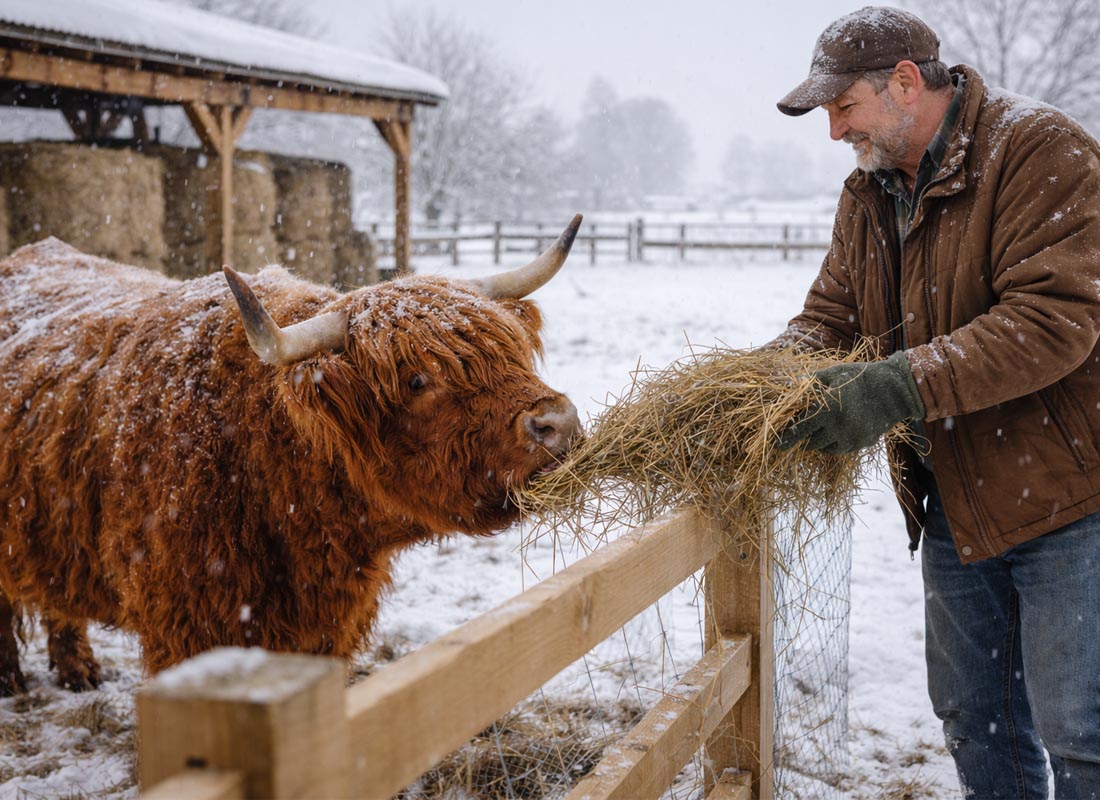
Property and infrastructure maintenance represent additional ongoing costs that many new cattle owners underestimate. Fencing requires periodic repairs, especially after severe weather; water systems need seasonal attention, and shelter structures may need improvements over time. Most owners should budget $400 to $1,000 annually for property maintenance related to cattle keeping. Additionally, equipment maintenance, utilities for water systems, and supplies like mineral supplements add to the total annual cost of Highland cattle ownership.
Mini Fluffy Cows: Special Considerations
The popularity of mini fluffy cows has created unique market dynamics affecting both availability and pricing. These adorable miniature cattle appeal to people who might not otherwise consider livestock ownership, expanding the market beyond traditional agricultural buyers. This broader appeal has driven prices upward, particularly for animals with exceptional temperament and appearance. When evaluating mini fluffy cow prices, compare offerings carefully as quality and size vary significantly among breeders claiming to offer miniature cattle.
True miniature Highland cattle result from careful selective breeding over multiple generations, not simply from breeding undersized or unhealthy animals. Reputable breeders focus on maintaining breed characteristics while reducing size, ensuring their miniature cattle retain the hardiness, temperament, and appearance that make Highland cattle special. This careful breeding approach takes time and expertise, justifying higher prices for quality miniature animals from established breeding programs.
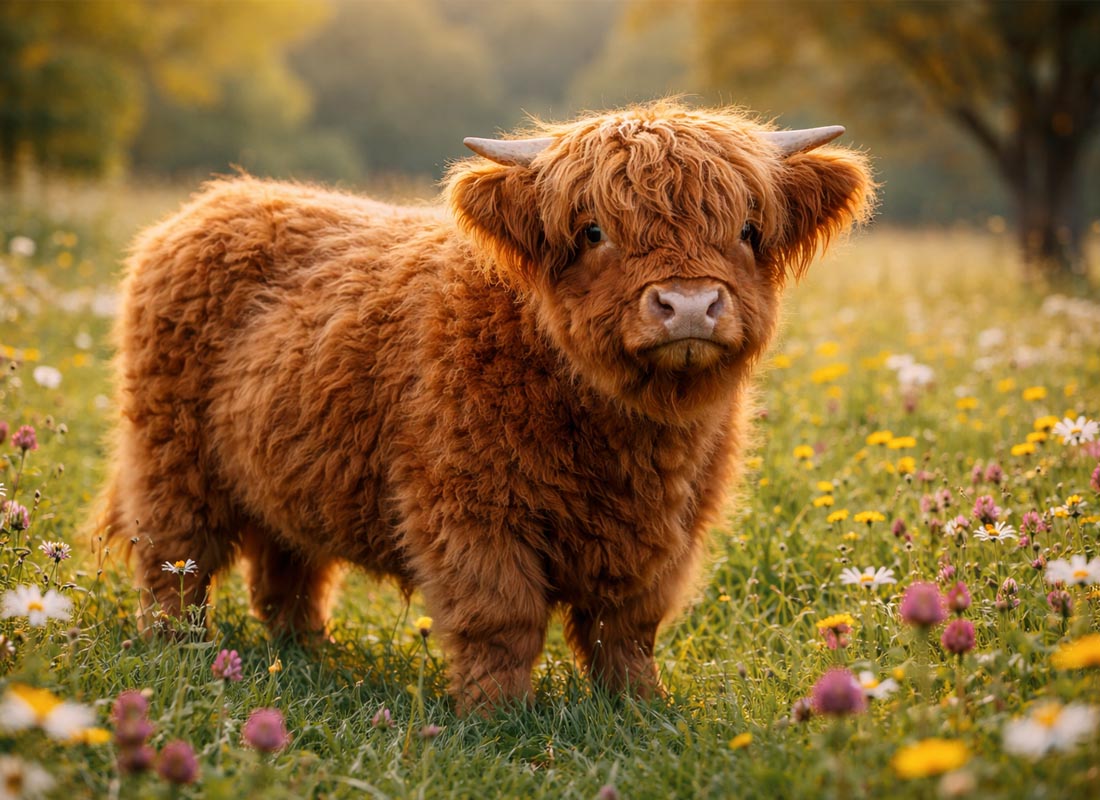
Size expectations require clear communication between buyers and sellers when purchasing miniature Highland cattle. Some breeders use height measurements at the hip, while others measure at the shoulder, leading to confusion about actual animal size. Request specific measurements of both parents, along with growth projections for calves. Understanding the sizing standards used by your chosen breeder helps ensure you’re getting animals that meet your expectations and property limitations.
Breeding Highland Cattle: Investment Potential
Many Highland cattle owners pursue breeding operations to offset ownership costs and potentially generate profit. A proven breeding cow can produce one calf annually, with baby Highland calves typically selling for $1,200 to $3,000 depending on size, quality, and market conditions. This potential revenue stream makes Highland cattle attractive for small farmers seeking farm income while enjoying these magnificent animals. Successful breeding requires investment in quality foundation stock, but the returns can justify initial costs over time.
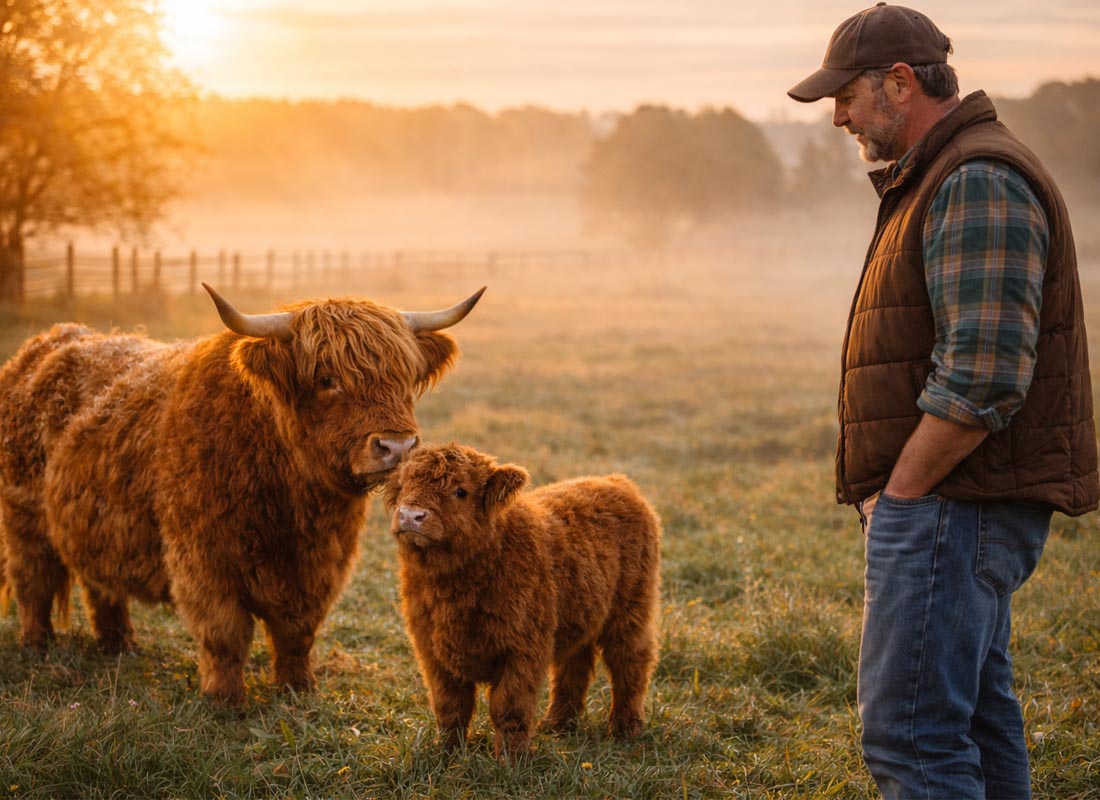
Breeding Program Considerations:
- Initial investment in quality breeding animals
- Bull purchase ($3,000-$10,000) or AI costs ($50-$150 per breeding)
- Gestation period and calving management time
- Registration and marketing expenses
- Record keeping and genetic tracking
- Time investment for herd management and sales
Bulls represent significant investments in breeding programs, with registered Highland bulls ranging from $3,000 to $10,000 or more, depending on genetics, conformation, and proven offspring quality. Many small-scale breeders opt for artificial insemination to access superior genetics without purchasing bulls, though this requires proper timing, equipment, and often professional assistance. Alternative options include bull leasing arrangements with other breeders, sharing costs while accessing quality genetics for limited breeding seasons.
Marketing Highland calves requires effort but can prove rewarding for dedicated breeders. Building a reputation for quality animals takes several years and multiple calf crops, but breeders who consistently produce healthy, well-conformed cattle with good temperaments develop loyal customer bases. Online platforms, social media marketing, agricultural shows, and breed association advertisements provide marketing channels. Many successful breeders also find that satisfied customers become repeat buyers and valuable sources of referrals to others seeking Highland cattle.
Regional Price Variations and Market Trends
Geographic location significantly impacts what you’ll pay for Highland cattle, with prices varying considerably across different regions and countries. In areas where Highland cattle are well-established, such as parts of Scotland, Canada, and certain US states, prices may be more competitive due to higher availability and breeder concentration. Conversely, in regions where Highland cattle remain relatively rare, prices tend to increase due to limited local supply and higher transportation costs for bringing animals into these areas.
Regional climate and agricultural practices also influence Highland cattle pricing and demand. Areas with harsh winters and rough terrain often see higher demand for Highland cattle due to their superior cold hardiness and ability to thrive on marginal pastures. This increased demand in challenging climates can drive prices upward as farmers recognize the economic advantages of cattle that require less intervention and supplementation than more delicate breeds.

Market trends show growing interest in both traditional and miniature Highland cattle, driven partly by social media exposure and increasing desire for homesteading lifestyles. This trend has supported stable or increasing prices in most markets, particularly for quality breeding stock and miniature varieties. However, economic conditions, feed costs, and regional livestock market fluctuations all affect pricing. Timing purchases to take advantage of seasonal patterns can provide savings, with some breeders offering better prices in the fall after weaning when they’re reducing feed costs for winter.
Comparing Full-Size vs Mini Highland Cattle Costs
Understanding the cost differences between full-size and miniature Highland cattle helps buyers make informed decisions based on their specific situations. While purchase prices for mini Highland cows often exceed those of full-size cattle, the long-term economics can favor miniature animals for small property owners. Mini Highland cattle require approximately 30% to 50% less feed than full-size animals, reducing annual operating costs significantly. They also need less pasture space, making them viable for properties where full-size cattle would be impractical.
Full-size Highland cattle offer advantages in certain situations despite potentially lower initial purchase prices. Larger animals typically produce more beef if meat production is a goal, and full-size breeding operations may have broader market appeal since more buyers seek traditional Highland cattle. Additionally, full-size animals may be easier to source locally in many regions, reducing transportation costs and providing more breeder options for comparison shopping.
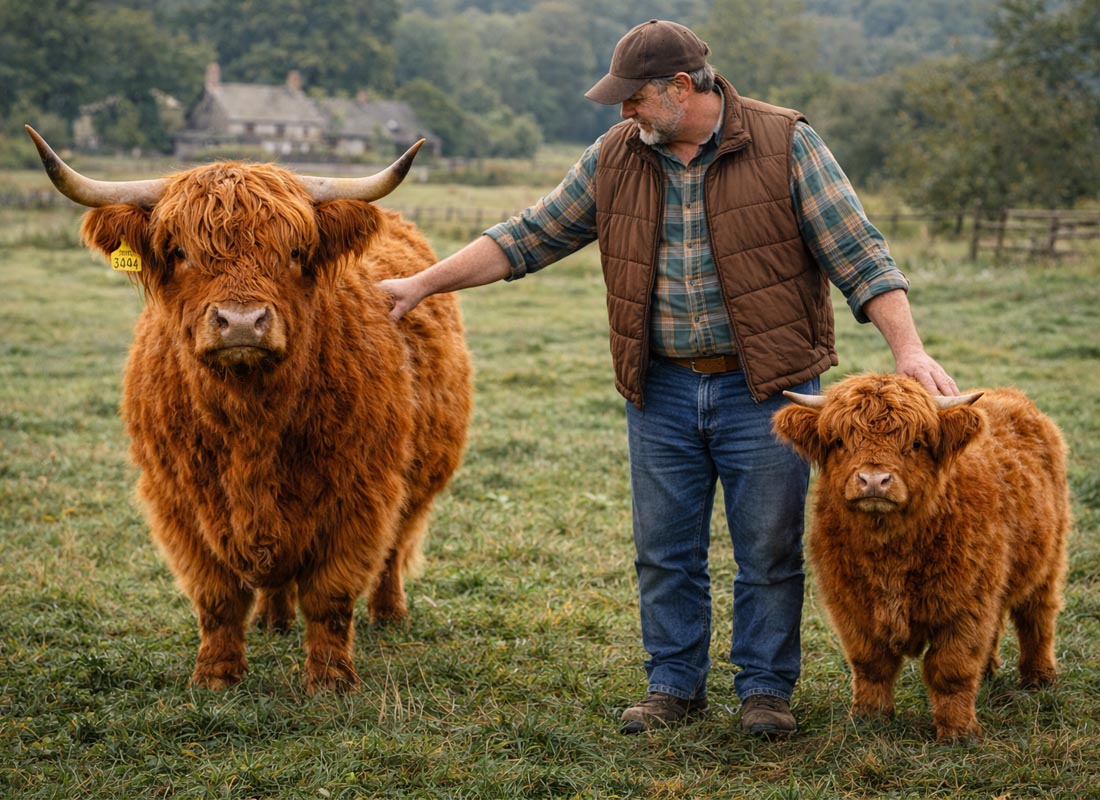
The decision between miniature and full-size Highland cattle ultimately depends on your specific goals, available space, and budget for both initial purchase and ongoing maintenance. Small hobby farmers with limited acreage often find miniature Highland cattle the only practical option, making the higher purchase price worthwhile. Conversely, those with substantial land and interest in traditional farming practices may prefer full-size cattle despite higher feed costs, viewing them as more aligned with conventional agricultural operations.
Health Considerations and Veterinary Costs
Highland cattle’s renowned hardiness translates to relatively low veterinary costs compared to many other breeds, though proper health management remains essential. These animals evolved in harsh conditions, developing strong immune systems and natural disease resistance. However, they still require preventive care, including annual vaccinations, parasite control, and periodic health examinations. Establishing a relationship with a veterinarian experienced in cattle care before purchasing Highland cattle ensures you have professional support when needed.
Common health issues in Highland cattle are typically minor and preventable through proper management. Hoof care requires attention, as Highland cattle can develop hoof problems if kept in persistently wet conditions despite their heritage in damp Scottish climates. Regular hoof trimming, either done by owners with proper training or by professional hoof trimmers, prevents most problems. Budget $50 to $150 per animal annually for professional hoof care if you cannot perform this maintenance yourself.

Reproductive health management becomes important for breeding operations, adding to veterinary costs but ensuring breeding success. Pregnancy checks, calving assistance when needed, and postnatal examinations for both cow and calf protect your investment in breeding stock. Many Highland cattle calve easily without assistance due to relatively small calf birth weights, but having veterinary support available during calving season provides peace of mind. Factor in an additional $200 to $500 annually for breeding-related veterinary services if you plan to breed your Highland cattle.
Is Highland Cattle Ownership Right for You?
Before investing in Highland cattle, carefully assess whether these animals align with your circumstances, goals, and capabilities. Highland cattle require adequate land, with most experts recommending one to two acres of good pasture per animal for miniature varieties and two to three acres for full-size cattle. They need secure, well-maintained fencing that can contain curious, strong animals with impressive horns. While generally docile and friendly, Highland cattle command respect and require confident, knowledgeable handling.
Time commitment represents another crucial consideration for prospective Highland cattle owners. Even hardy Highland cattle need daily visual checks, regular feeding during winter months, and periodic health management tasks. Breeding operations require additional time for heat detection, breeding management, calving supervision, and calf care. If you travel frequently or have limited time for animal care, Highland cattle ownership may prove challenging unless you have reliable help available during your absences.

Financial readiness extends well beyond the purchase price of Highland cattle. Successful owners maintain emergency funds for unexpected veterinary care, fence repairs, equipment replacement, and market downturns affecting animal values. Creating a detailed budget that accounts for both routine and unexpected expenses helps ensure you can provide proper care throughout the animal’s life, which can span 15 to 20 years or more. This long-term financial commitment deserves serious consideration before purchasing your first Highland cow.
Making Your Highland Cattle Purchase
When you’re ready to purchase Highland cattle, approach the process methodically to ensure success. Visit multiple breeders when possible, comparing animals, facilities, and breeder knowledge and transparency. Reputable breeders welcome farm visits, answer questions thoroughly, and provide comprehensive documentation, including registration papers, health records, and genetic information. They should also offer post-sale support, understanding that first-time cattle owners benefit from ongoing guidance.
Negotiate terms clearly before finalizing any purchase, ensuring you understand what’s included in the purchase price. Some breeders include initial vaccinations, health certificates, and even delivery in their pricing, while others charge separately for these services. Clarify the animal’s registration status, as some listings for registered Highland cattle may actually be animals eligible for registration but not yet registered, requiring additional fees and paperwork after purchase.
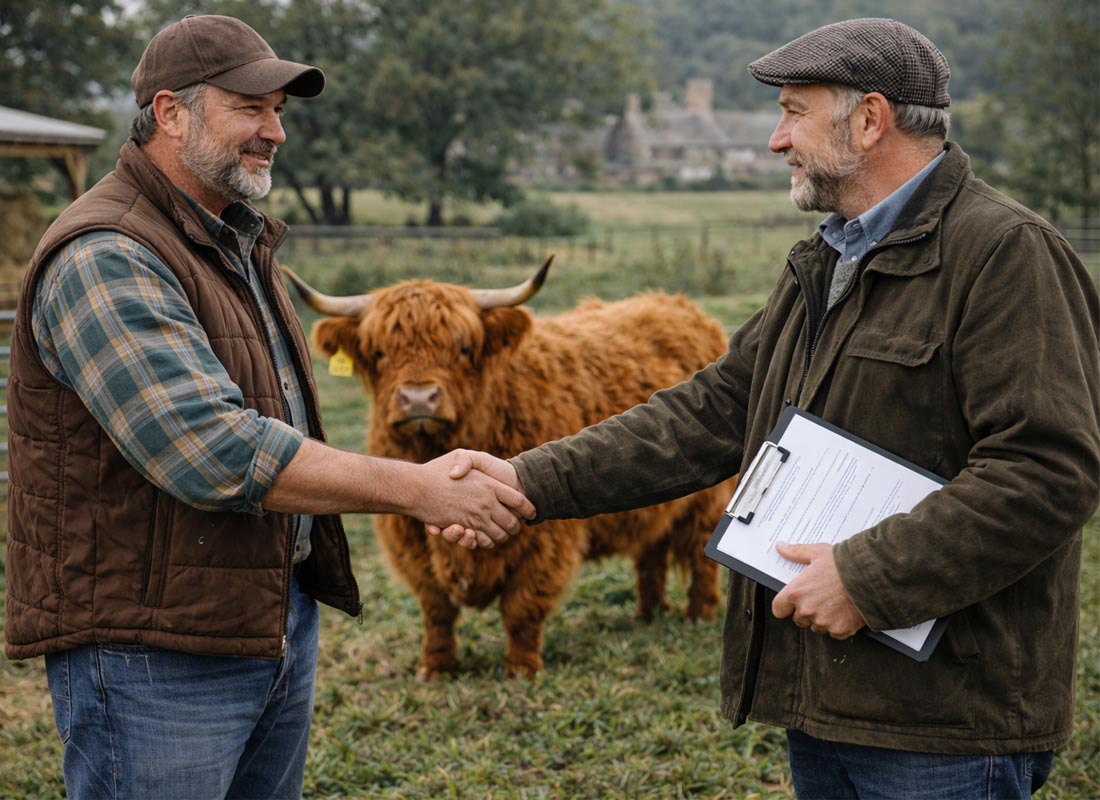
Consider starting with one or two animals rather than immediately purchasing a larger herd. This approach allows you to develop handling skills, understand the time and resource requirements, and confirm that Highland cattle ownership meets your expectations before making larger investments. Many successful Highland cattle operations started small, expanding gradually as owners gained experience and confidence. This measured approach reduces financial risk while building the foundation for potential future growth in your Highland cattle venture.
Conclusion: Understanding the Full Investment
Highland cattle ownership represents a significant financial and time commitment that extends far beyond the initial purchase price. Whether you’re considering miniature or full-size animals, expect to invest $1,500 to $8,000 or more per animal initially, plus ongoing annual costs of $1,200 to $3,500 per animal for feed, veterinary care, and property maintenance. These magnificent animals offer unique benefits, including exceptional hardiness, gentle temperaments, and strong market demand that can justify the investment for properly prepared owners.
Success with Highland cattle requires thorough preparation, realistic expectations, and genuine commitment to animal welfare. Take time to visit multiple breeders, attend agricultural shows, and connect with current Highland cattle owners to learn from their experiences. Understanding both the rewards and challenges ensures your decision aligns with your goals, resources, and lifestyle. The growing popularity of Highland cattle has increased availability and breeder options, providing prospective owners more choices than ever before.
Whether you’re drawn to Highland cattle for their beef quality, breeding potential, pet qualities, or simply their striking appearance and gentle nature, informed decision-making is essential. By carefully considering all costs, preparing adequate facilities, choosing reputable breeders, and maintaining realistic expectations, you can embark on a fulfilling journey with these remarkable Scottish bovines. The investment in Highland cattle extends beyond dollars, offering the intangible rewards of working with one of the world’s most distinctive, resilient, and endearing cattle breeds.
Frequently Asked Questions About Highland Cow Prices
Highland cattle can be profitable breeding investments with proper planning. A breeding cow produces one calf annually, with calves selling for $1,200 to $3,000 depending on quality. Initial investment includes purchasing quality breeding stock ($2,000-$5,000 per cow) and a bull ($3,000-$10,000) or using artificial insemination. Success requires time for herd management, marketing efforts, and building a reputation for quality animals over several years.
Yes, Highland cattle make excellent pets, especially miniature varieties. Purchase prices range from $1,500 to $6,000 depending on size and quality. Annual costs including feed, veterinary care, and maintenance typically run $1,200 to $3,000 per animal. They require adequate pasture space, secure fencing, and daily care. Mini Highland cows are particularly popular as pets due to their manageable size and gentle, friendly temperament.
The most affordable option is buying baby Highland calves directly from breeders, with prices starting around $800 to $1,500. Purchasing animals at the end of show season can also yield discounts on mature cattle. Some breeders offer payment plans or multi-animal discounts. While seeking lower prices, remember that investing in quality animals from reputable breeders often proves more economical long-term.
Mini Highland cows typically cost more than full-size Highland cattle, ranging from $2,000 to $6,000 compared to $1,500 to $5,000 for full-size animals. Micro mini Highland cows can exceed $8,000 for exceptional breeding stock. The higher price reflects specialized breeding to maintain breed characteristics while reducing size. However, miniature varieties offer long-term savings through reduced feed costs and smaller space requirements.


